Western Australia boasts the longest coastline of any Australian state, stretching over 10,000 miles along the Indian Ocean and creating some of the most spectacular beach environments on earth. From the turquoise waters of the northwest to the powerful Southern Ocean swells in the south, these shores offer experiences found nowhere else on the planet. The remarkable diversity ranges from tropical coral reefs to massive dunes, from whale shark habitats to penguin colonies – all framed by the characteristic rust-red earth meeting pristine white sand and deep blue water that defines Australia’s western edge.
Here is a list of the 14 best beaches in Western Australia that showcase the state’s extraordinary coastal environments and unique natural attractions.
Cable Beach

Stretching 14 miles along Broome’s coastline, Cable Beach delivers the quintessential tropical beach experience with a distinctly Australian twist. The beach earned its name from the undersea telegraph cable laid between Australia and Java in 1889, connecting the remote outpost to the world for the first time. Its wide, flat expanse of white sand creates the perfect stage for the region’s famous sunsets when the fiery orange sun sinks directly into the Indian Ocean horizon. The beach’s most iconic image – camel trains silhouetted against the sunset – draws visitors from around the world who join these sunset camel safaris for unforgettable shoreline journeys.
Turquoise Bay
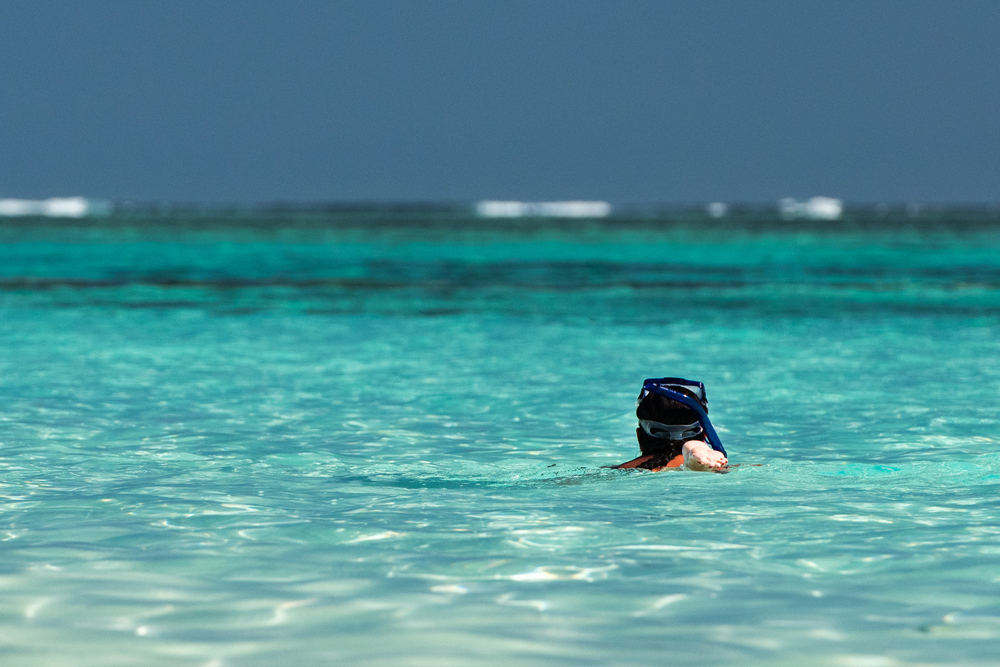
Located within Cape Range National Park near Exmouth, Turquoise Bay offers a snorkeling experience so accessible and remarkable that it consistently ranks among Australia’s top beaches. The Ningaloo Reef lies just yards offshore, allowing swimmers to drift along with the gentle current while colorful coral formations and hundreds of fish species pass below. This natural “drift snorkel” carries visitors along the bay before they exit at sand patches and walk back to start again. The contrast between the red desert reaching almost to the shoreline and the impossibly blue water creates a visual spectacle that photographers struggle to capture without looking artificially enhanced.
Like Travel Pug’s content? Follow us on MSN.
Greens Pool
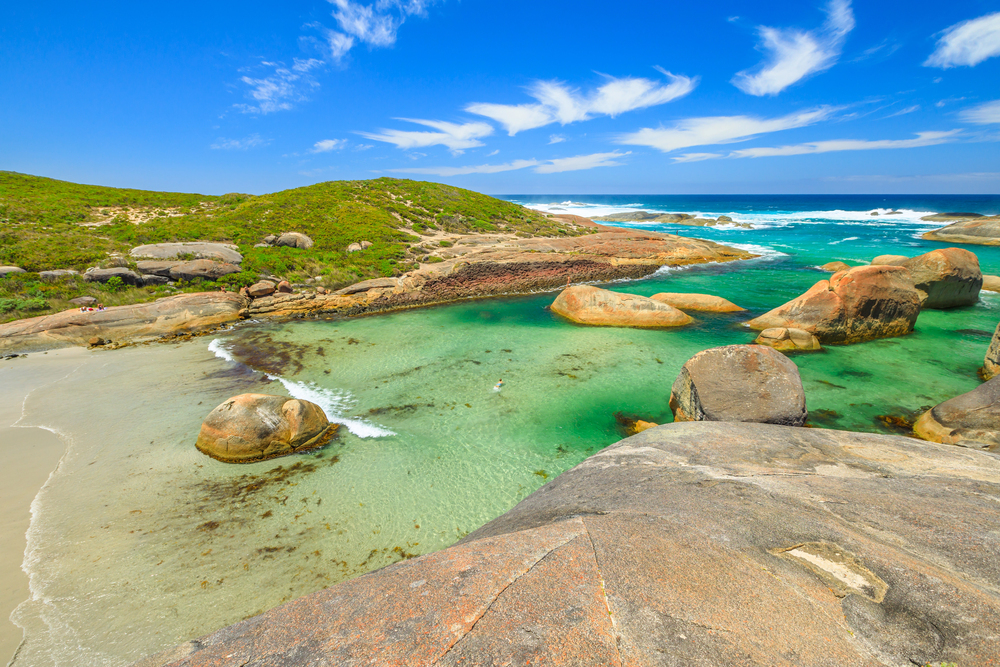
Nature created the perfect swimming enclosure at Greens Pool, where massive granite boulders protect a tranquil turquoise lagoon from the powerful Southern Ocean swells. Located near Denmark in the state’s far south, this beach offers bath-temperature water during summer months despite its southern location. Massive, rounded rocks scattered through the clear water create natural exploration zones where starfish, small rays, and colorful fish find shelter. Just beyond Greens Pool lies Elephant Rocks, where boulder formations genuinely resemble a herd of elephants wading into the sea – creating two remarkable beach experiences within a short walking distance.
Eighty Mile Beach
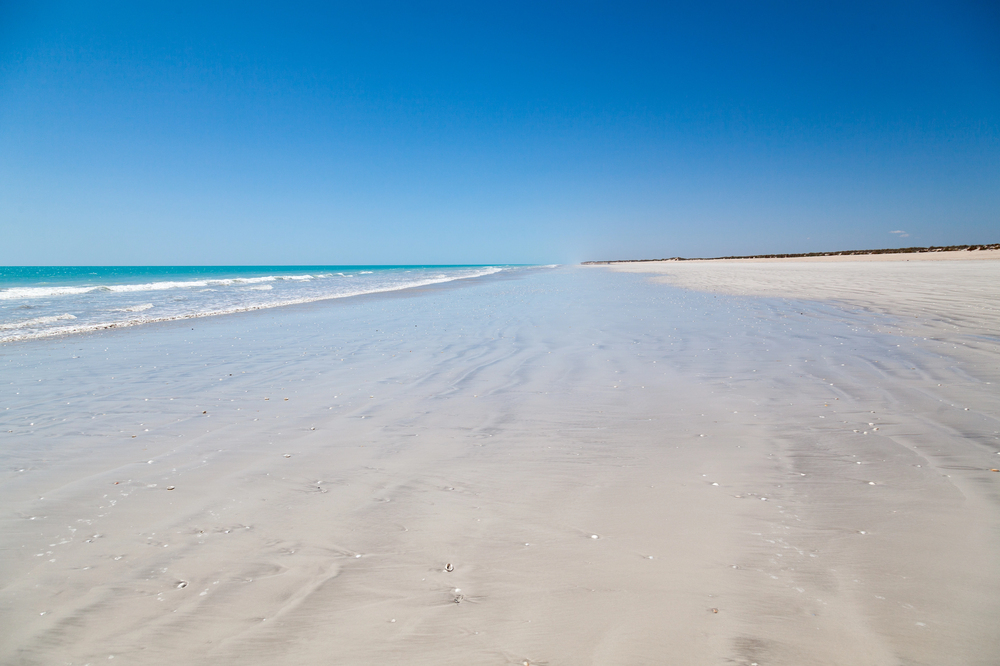
Despite its name suggesting a precise measurement, this spectacular stretch of coastline actually extends for 140 miles between Port Hedland and Broome, creating Australia’s longest uninterrupted beach. The remote location keeps crowds away, allowing visitors to experience the rare joy of having miles of pristine shoreline completely to themselves. Renowned for exceptional shell collecting, the beach reveals new treasures with each tide, drawing collectors who search for rare specimens among the millions washed ashore daily. The beach provides a critical habitat for migratory shorebirds, with over 500,000 birds stopping here annually during their journeys between Arctic breeding grounds and southern feeding areas.
Like Travel Pug’s content? Follow us on MSN.
Lucky Bay
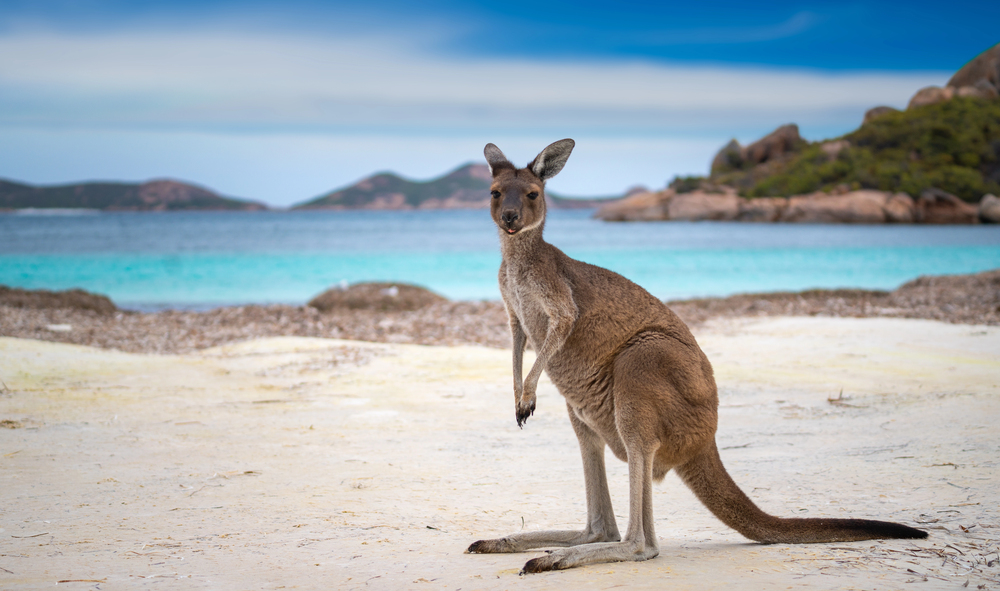
Often promoted as having Australia’s whitest sand, Lucky Bay’s perfect crescent shape cradles water so clear and blue they appear digitally enhanced. Located within Cape Le Grand National Park near Esperance, the beach stretches for three miles with squeaky-clean sand composed of fine quartz crystals. The bay’s most famous residents – wild kangaroos that regularly lounge on the beach – create quintessentially Australian photo opportunities that seem almost too perfectly staged. Massive granite headlands bookend the bay, offering short hikes to panoramic viewpoints where the archipelago of islands scattered across the bay creates a scene that justifies the long journey to reach this remote paradise.
Like Travel Pug’s content? Follow us on MSN.
Shell Beach
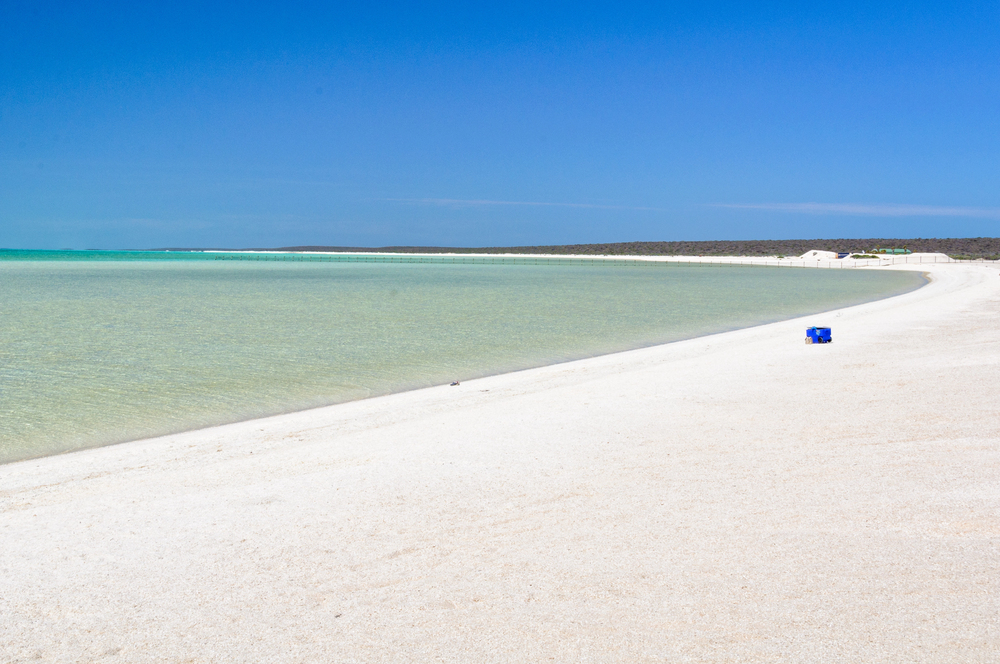
In a land of superlatives, Shell Beach stands unique – a shoreline composed not of sand but entirely of tiny white cockle shells piled up to 30 feet deep and extending for more than 60 miles. Located in the Shark Bay World Heritage Area, this extraordinary beach formed over thousands of years as trillions of cockles thrived in the hypersaline waters where few predators could survive. Walking on the crunchy surface creates a sound unlike any traditional beach, while the water maintains exceptional clarity due to the absence of sand particles. The tiny shells have historically been compressed into natural limestone blocks, which were harvested to construct buildings in the nearby historic town of Denham.
Cottesloe Beach
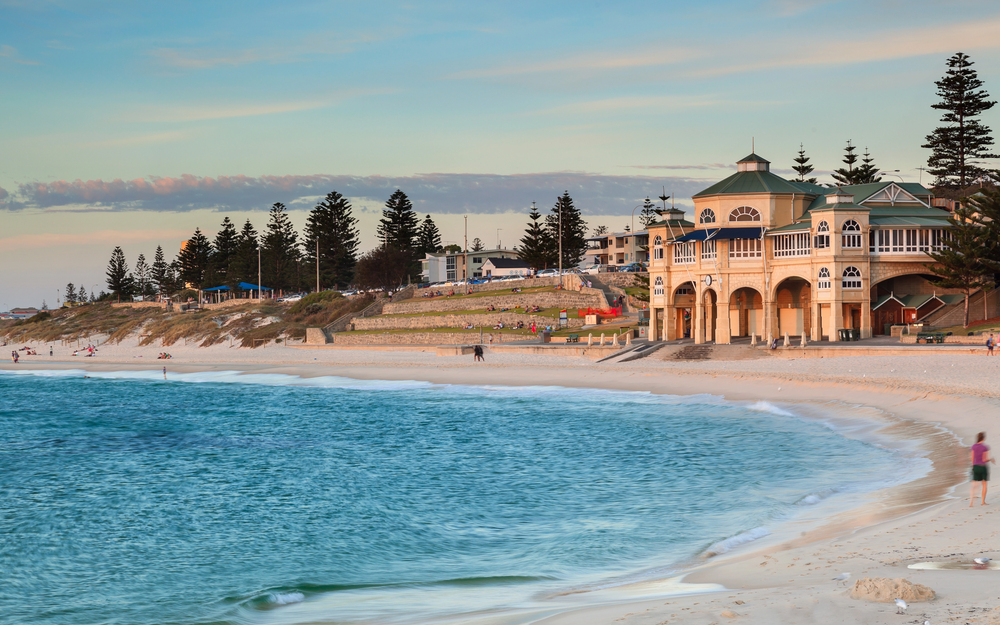
Perth’s favorite urban beach has defined the city’s beach culture for generations, drawing crowds to its pristine shoreline just minutes from downtown skyscrapers. The beach’s distinctive pavilion, built in 1929, stands as an architectural symbol of Western Australia’s beach heritage amid the landscaped terraces and Norfolk pines. Crystal-clear waters make it perfect for swimming, while consistent afternoon sea breezes—locally known as the “Fremantle Doctor”—create ideal windsurfing conditions and provide relief from summer heat. Each March, the beach transforms into an outdoor gallery during the “Sculpture by the Sea” exhibition, with massive artworks placed along the shoreline, drawing over 200,000 visitors to this creative fusion of art and natural beauty.
Elephant Cove
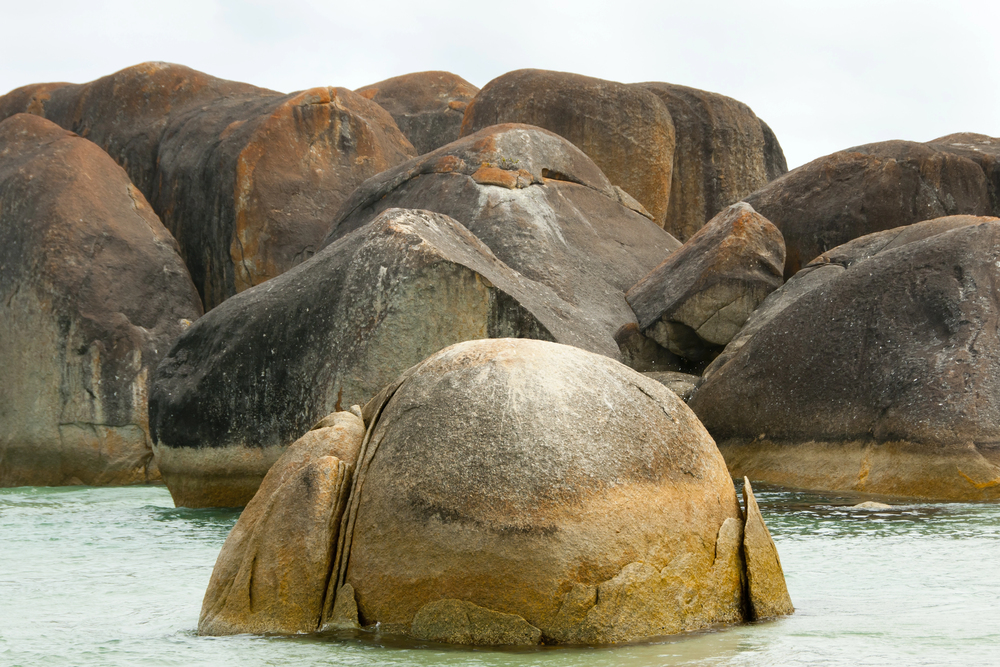
Named for the elephant-shaped boulders that stand guard in the turquoise waters, this hidden gem within William Bay National Park offers a more secluded alternative to the nearby Greens Pool. The massive granite rocks create a labyrinth of channels and protected pools perfect for exploration during low tide. Visitors can climb atop the “elephants” for panoramic views across the Southern Ocean or squeeze through narrow passages between boulders to discover hidden caves and grottoes. The contrast between weathered gray granite, white sand, and blue-green water creates a photographer’s paradise throughout the day as changing light transforms the scene.
Like Travel Pug’s content? Follow us on MSN.
Little Beach
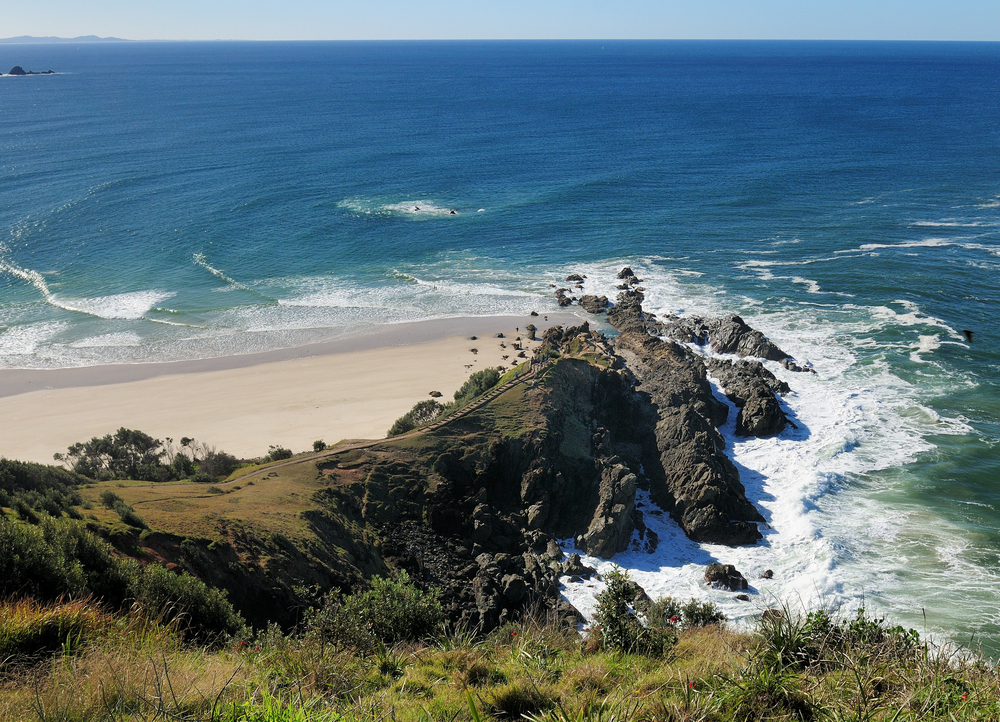
Nestled within Two Peoples Bay Nature Reserve near Albany, Little Beach remains one of Western Australia’s most beautiful yet uncrowded shorelines despite growing recognition of its exceptional beauty. The half-mile crescent of brilliant white sand lies sheltered between dramatically eroded granite headlands covered in coastal heath. Powerful waves from the Southern Ocean create excellent bodysurfing conditions, while the crystalline waters range from turquoise in the shallows to deep cobalt blue offshore. The beach’s relative remoteness – requiring a drive down unpaved roads – helps maintain its pristine condition and limits visitor numbers even during peak holiday periods.
Twilight Beach
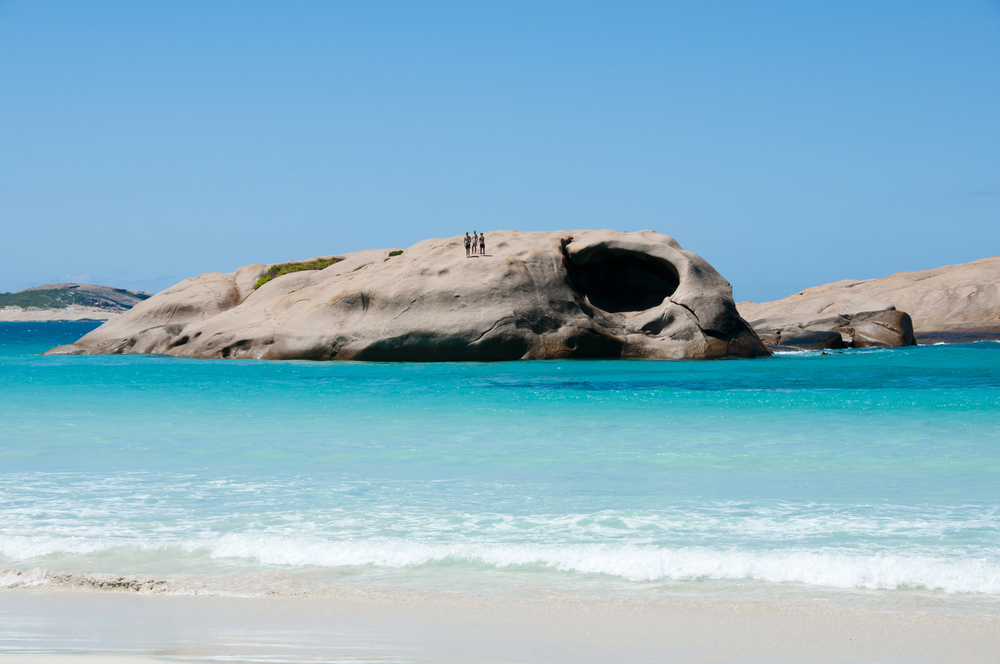
Just minutes from Esperance town center, Twilight Beach combines accessibility with extraordinary natural beauty that earned it recognition as Australia’s best beach in 2006. Massive rounded granite boulders rise from impossibly blue waters, creating natural swimming areas protected from ocean swells. The shoreline’s perfect crescent shape creates ideal conditions for swimming, with gentle waves and a gradually sloping sandy bottom safe for all ages. Unlike many of Western Australia’s most beautiful beaches that require four-wheel-drive access, Twilight Beach offers sealed road access complete with parking facilities and restrooms, making this world-class beach experience available to everyone.
Hamelin Bay
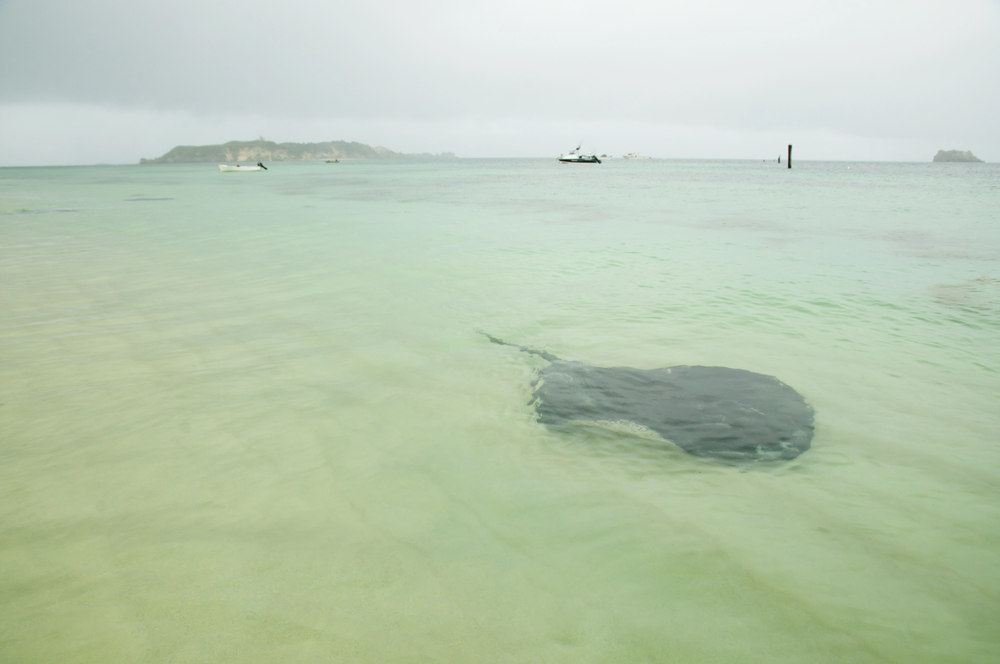
This tranquil bay on the southwest coast offers a unique wildlife encounter – friendly wild stingrays that swim right to the shoreline to greet visitors. These graceful creatures, some with wingspans exceeding six feet, glide through crystal-clear shallows where they’ve become accustomed to human presence over decades. Beyond this unusual attraction, the beach features the haunting remains of wooden jetty pylons from its past as a timber port, creating ethereal silhouettes against sunset skies. The protected bay offers safe swimming conditions, while nearby limestone caves and the famous Cape to Cape walking track provide additional adventures beyond the shoreline.
Meelup Beach
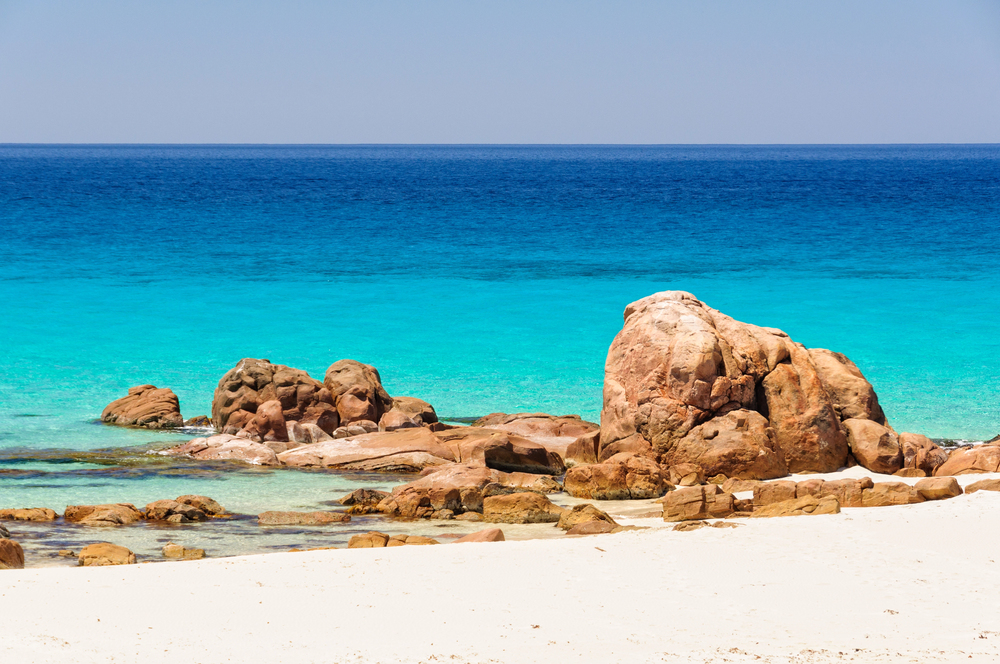
Protected from the prevailing southwesterly winds by Cape Naturaliste, Meelup Beach offers calm, clear waters perfect for swimming throughout the year. Located in a small cove surrounded by forested hills that reach almost to the shoreline, the beach maintains a natural bushland setting despite its popularity. During summer months, the beach becomes one of the few places on Australia’s west coast where visitors can watch both sunrise and sunset over water as the sun rises over distant Cape Naturaliste and sets over Geographe Bay. The annual migration of humpback and southern right whales passes directly offshore, sometimes coming within a hundred yards of swimmers during September and October.
Like Travel Pug’s content? Follow us on MSN.
Misery Beach
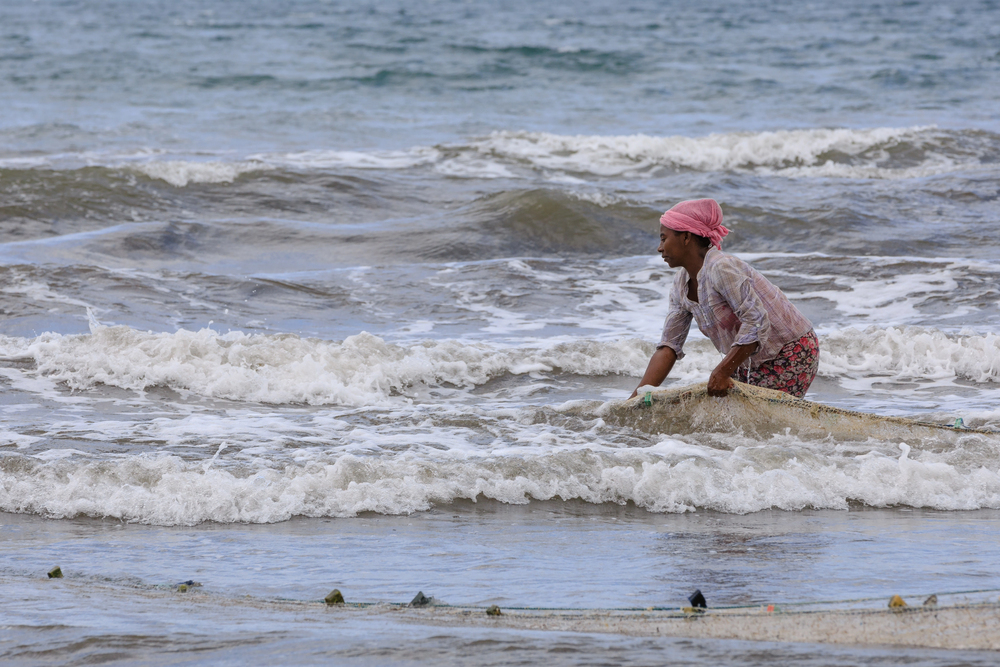
Despite its foreboding name – earned from its past as a whaling station site – this beach near Albany ranks among Western Australia’s most idyllic coastal spots. The small, sheltered cove features powder-soft white sand contrasting dramatically with granite outcrops and the turquoise waters of the Southern Ocean. The beach’s southern aspect protects it from the prevailing winds, creating unusually calm conditions in a region famous for its powerful ocean swells. The nearby historic whaling station has been transformed into a museum documenting the area’s controversial past, while the beach itself has evolved from a place of industry to a haven of natural beauty.
Coral Bay
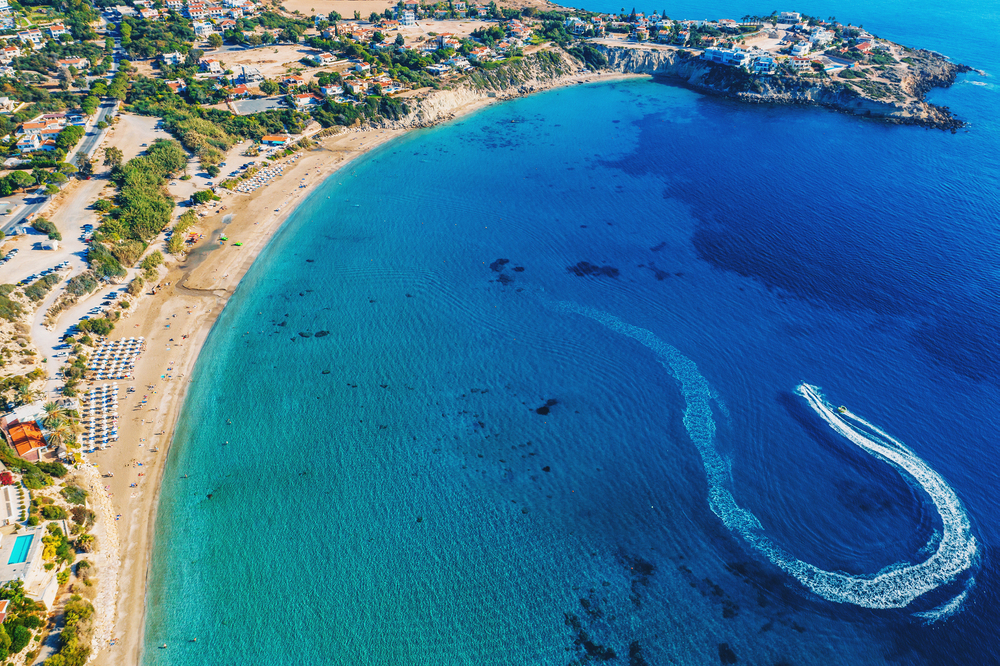
Less a traditional beach than a living natural wonder, Coral Bay provides the easiest access to a pristine coral reef anywhere in Australia. The Ningaloo Reef grows virtually to the shoreline, allowing visitors to wade directly from the beach into an underwater world of over 500 fish species and 300 coral varieties. The bay’s protected waters create safe swimming conditions for all ages, while natural currents create perfect drift snorkeling opportunities along coral gardens. Between March and July, the bay serves as a gathering point for majestic whale sharks – the world’s largest fish – which approach close enough to shore that even novice snorkelers can join tours to swim alongside these gentle giants.
Where Desert Meets Ocean
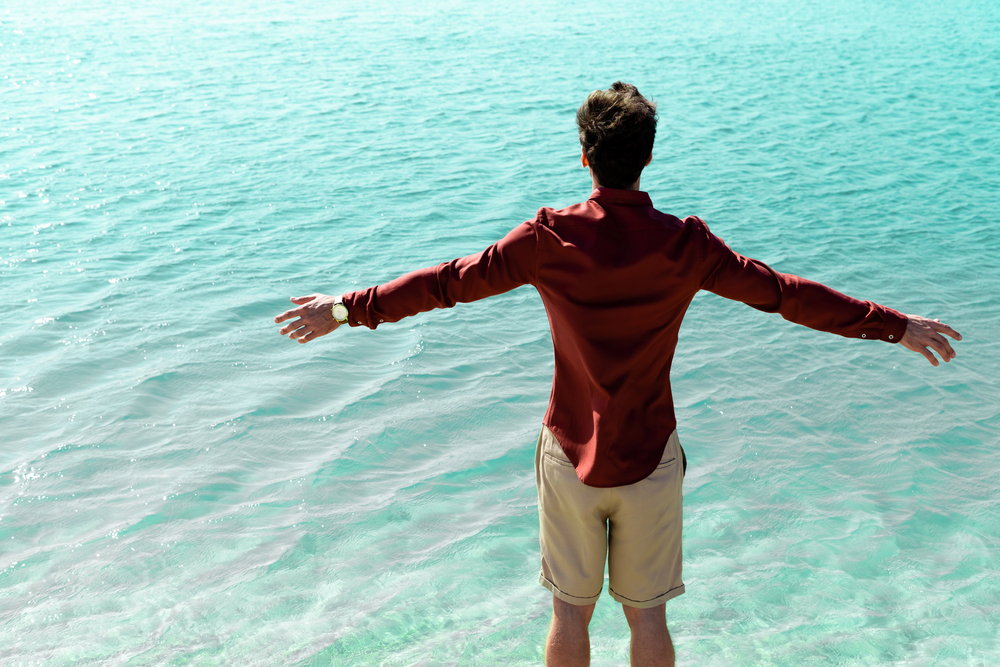
Western Australia’s beaches represent more than just places for recreation – they showcase the extraordinary meeting points between one of the world’s oldest landmasses and three massive oceans. The state’s isolation has preserved coastal environments increasingly rare elsewhere, creating experiences that combine pristine natural beauty with unique wildlife encounters.
From the tropical waters of the north, where ancient reefs thrive, to the powerful Southern Ocean shores where massive granite boulders create natural sculpture gardens, Western Australia’s beaches reflect the state’s remarkable diversity and scale. Visitors fortunate enough to explore these shores discover why Australians consider their western coastline a national treasure worth protecting for future generations.
More from Travel Pug

- Cities Growing so Fast You Won’t Recognize Them in 10 Years
- 13 Destinations Where Tourists Regularly Regret Their Trip
- 16 U.S. Cities That Are Quietly Becoming Travel Hotspots
- Where to Travel If You Love Long Bus Rides and Daydreams
- 20 Cities Perfect for Solo Travelers Who Crave Adventure & Culture
Like Travel Pug’s content? Follow us on MSN.
